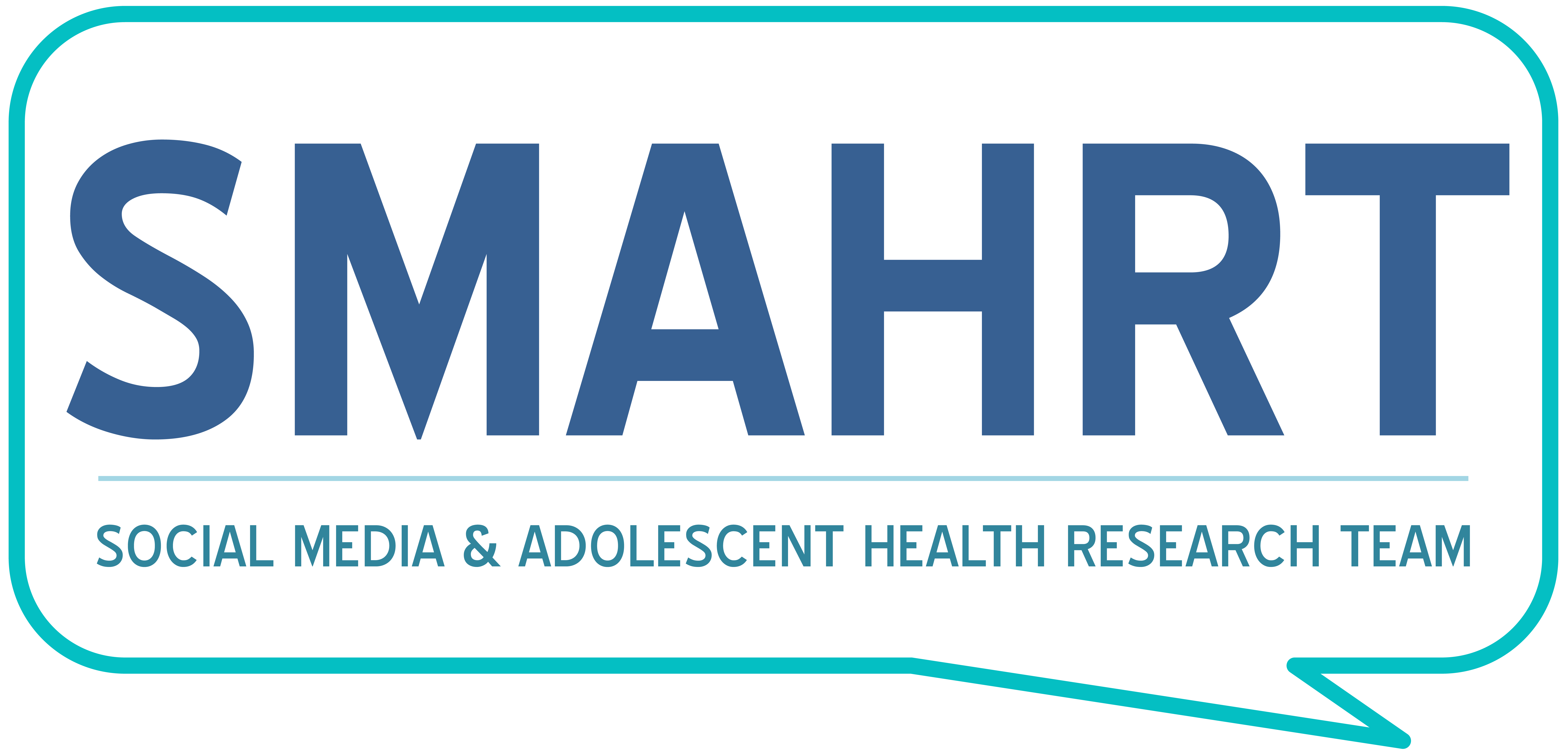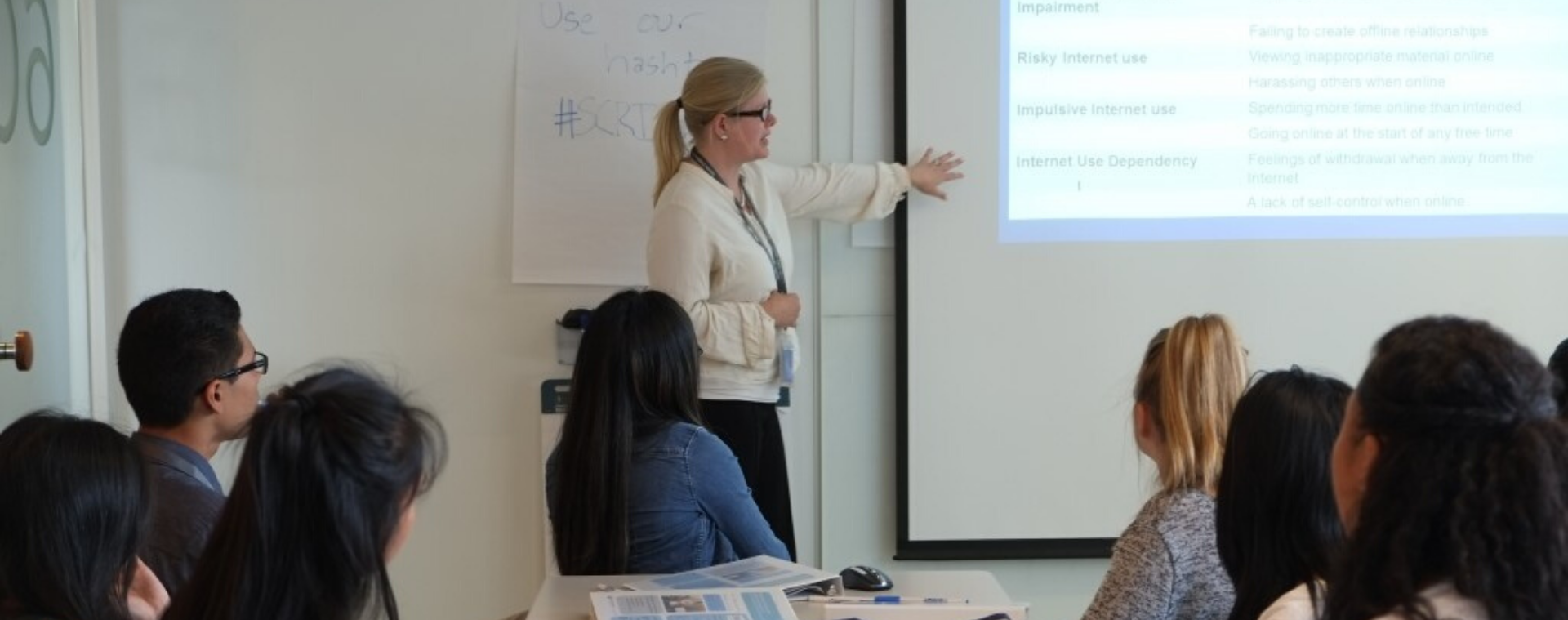
The idea of “bullying” has radically evolved over time. What was once thought to be an aggressive verbal or physical act that primarily happened at school, the introduction of technology and social media has transformed bullying into a phenomenon that can follow adolescents throughout their everyday lives – otherwise known as cyberbullying. With advancements in technology, bullies now have an online platform to reach into victims private spaces at any time of the day, giving them the confidence to be mean and hurtful behind the protection of a screen. This has been leveraged and made easier with networking sites such as Facebook, Twitter, or Instagram. Cyberbullying in middle school and high school is a well-known issue; but, do these behaviors change when students make the transition from their senior year of high school to their freshman year of college?
In 2011, Rajitha Kota joined the SMAHRT team with the goal of answering this question, and what cyberbullying looks like in the college population. Kota gained interest in the topic because the concept of cyberbullying was getting a lot of media attention, including disturbing news stories about the serious consequences for both bullies and victims. Although she had passion for researching this topic, when starting her study she noticed there was not much information about cyberbullying in college students, and decided to investigate the issue amongst the college population. This interest was studied by Kota and developed into her paper “Cyberbullying Among College Students,” which we are pleased to feature as our February Study of the Month.

Kota decided to perform a focus group study and recruited people belonging to groups that are traditionally at-risk for bullying, as well as students from the general population. These at-risk groups included LBGTQ students and racial minorities. Forty-two students participated in the focus group study, and her team used the constant comparative approach to find themes and representative quotations. Kota asked participants questions about their views and perceptions of cyberbullying on campus, as well as examples of cyberbullying they had seen online. Kota explained that one of the most interesting findings to come out of the study was that the college students could not agree on a definition of cyberbullying. Although there was no consensus regarding a definition, the participants did agree that cyberbullying is mostly represented by three scenarios: hacking, airing dirty laundry, and mocking. Kota’s focus group participants gave useful and insightful examples and working definitions of the three scenarios of cyberbullying as previously mentioned. First, hacking involves gaining access to another user’s profile and posting on that profile without the owner’s permission – this is often characterized as occurring between roommates, close friends, or former romantic partners. Second, airing dirty laundry involved disagreements between roommates, romantic partners, or groups of friends, and one member posting about it on social media to shame one member of the relationship. Lastly, mocking involved publically teasing or putting down others based on posted content, such as insulting someone’s posted pictures or posting a picture that would embarrass another student.
“Cyberbullying Among College Students” found that participants generally agreed that bullying among older students could include attacking victims at the level of their beliefs or character, which might be concerning since college can be an important period of identity formation. Those who bully in college may also go on to continue that behavior into adulthood and into the workplace, by manipulating others to gain power or privilege. Therefore, college may be the last critical opportunity to intervene and prevent bullying behavior from occurring.

As mentioned earlier, Rajitha Kota joined SMAHRT in 2011, and this opportunity piqued her interest in adolescent medicine. That interest turned into a passion as Kota plans to work with the adolescent population in the future, and is still interested in the positive ways technology can be used to help this group make healthier choices. She is currently in her fourth year of medical school, planning to go into family medicine upon completion. Kota has fond memories of her time at SMAHRT, and told us it was one of the most enjoyable and formative experiences in her education. Through her time here Kota traveled, created her own research projects, gave an oral presentation at a national conference, mentored an undergraduate student, helped to write a grant for the Justice Department, published tons of papers, and while doing all of this was able to work with some of the most amazing people she has ever known!
Thank you, Rajitha for your dedication to adolescent health and SMAHRT and we cannot wait to see what your future holds. Be on the lookout next month for a new Study of the Month and an update on another SMAHRT alum!

